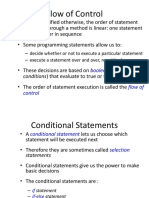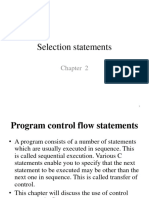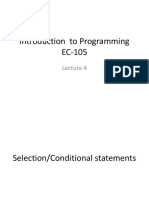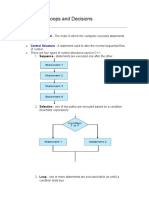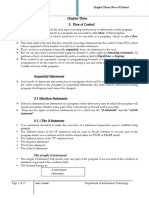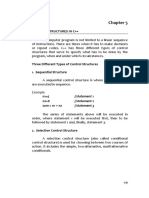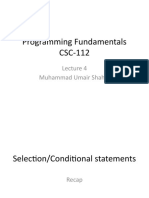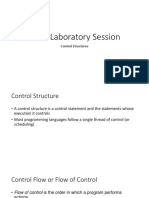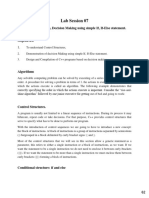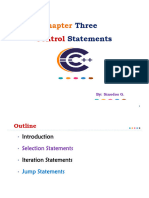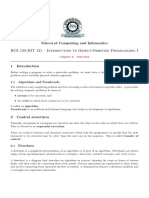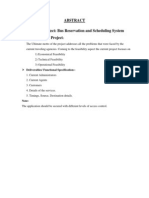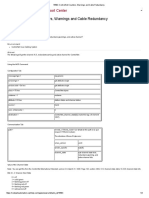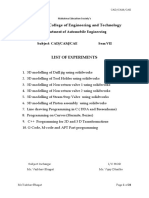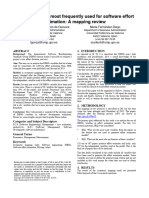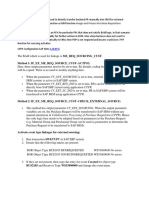0% found this document useful (0 votes)
9 views11 pagesModule 2 (Flow Control) Note
Module 2 covers flow control in programming, focusing on selection statements in C++. It explains the types of selection statements such as if, if...else, else if, and switch...case, along with their syntax and examples. Additionally, it introduces looping constructs like while, do...while, and for statements, along with nested flow control and practical problem sets.
Uploaded by
camyoder49Copyright
© © All Rights Reserved
We take content rights seriously. If you suspect this is your content, claim it here.
Available Formats
Download as PDF, TXT or read online on Scribd
0% found this document useful (0 votes)
9 views11 pagesModule 2 (Flow Control) Note
Module 2 covers flow control in programming, focusing on selection statements in C++. It explains the types of selection statements such as if, if...else, else if, and switch...case, along with their syntax and examples. Additionally, it introduces looping constructs like while, do...while, and for statements, along with nested flow control and practical problem sets.
Uploaded by
camyoder49Copyright
© © All Rights Reserved
We take content rights seriously. If you suspect this is your content, claim it here.
Available Formats
Download as PDF, TXT or read online on Scribd
/ 11



